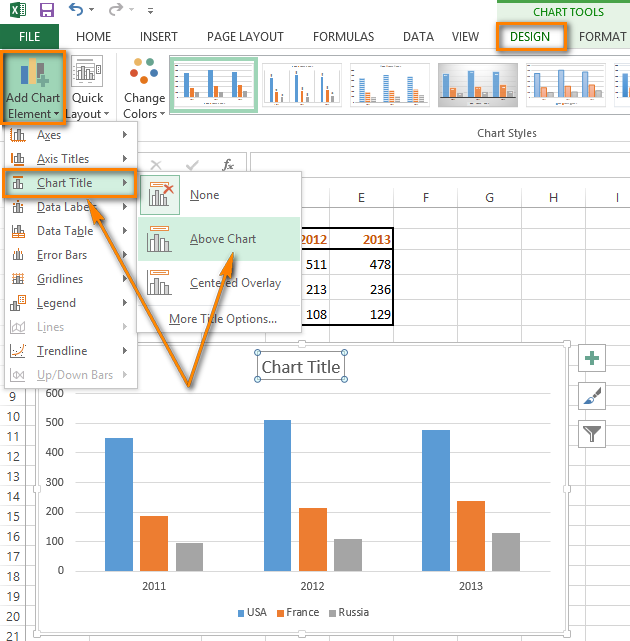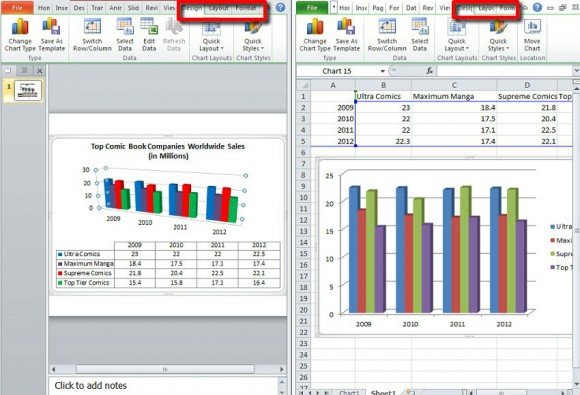
- #Chart tools in excel 2011 for mac for mac
- #Chart tools in excel 2011 for mac mac os
- #Chart tools in excel 2011 for mac windows
It also cannot handle attachments in Rich Text Format e-mail messages sent from Outlook for Windows, which are delivered as winmail.dat attachments. It does not support ActiveX controls, or OpenDocument Format.
#Chart tools in excel 2011 for mac for mac
Office for Mac 2011 has a number of limitations compared to Office 2010 for Windows. It replaces Entourage, which was included in Office 2001, X, 20 for Mac.
#Chart tools in excel 2011 for mac mac os
It also includes limited support for Apple's high-density Retina Displays, allowing the display of sharp text and images, although most icons within applications themselves are not optimized for this.Ī new version of Microsoft Outlook, written using Mac OS X's Cocoa API, returns to the Mac for the first time since 2001 and has full support for Microsoft Exchange Server 2007.
#Chart tools in excel 2011 for mac windows
In addition, Office 2011 supports online collaboration tools such as OneDrive and Office Web Apps, allowing Mac and Windows users to simultaneously edit documents over the web. There are however, apparently, according to Microsoft Helpdesk, some third party applications that can address problems with the VBA interface with Office for Mac. Purchasing the Home Premium version of Office for Mac will not allow telephone support automatically to query any problems with the VBA interface. Support for Visual Basic for Applications macros has returned after having been dropped in Office 2008.

Its interface is now more similar to Office 20 for Windows, with the addition of the ribbon. Here is the process replicated for the Mac.Microsoft Office 2011 includes more robust enterprise support and greater feature parity with the Windows edition. Example for Excel for Mac 2011Įach version of Excel will require slightly different instructions, but the technique will largely be the same. You can adjust and customize your graph as needed. At the top toolbar select Add Chart Elements and add the axis labels.īy following these directions, you should now see your data represented through the basic histogram graph. By now you should be looking at something like this.ġ0. Right Click on one of the Bars and select Format Data Series… from the drop down menu.ĩ. By now you should have something that looks like this. Selecting these options in prior versions of Excel without the ribbon toolbar will appear different.ħ. Click on Insert Column Chart, and select Clustered Column, from the 2-D Column Section. In my example, I have selected cells A1 through B7.Ħ. Once you have your raw data into Excel, select your data. In the Intervals and Frequency columns input your data.Ĥ. On the horizontal x-axis will be the intervals data which may also be called groups, segments, or bins. Histograms most often deal with intervals and frequency. Title the A1 and B2 column Intervals and Frequency accordingly. At the end of the article, for example, see an example of these steps for Excel for Mac 2011.Ģ. Excel 2007, 2010, and 2011 for Mac all have tested using this technique. The screenshots and directions presented here are from Excel 2013 however, previous versions of Excel can easily create histogram through these same methods.

The instructions here are for Excel 2013, but histograms can be created in prior versions of Excel in a similar fashion. Posted Octoby Alex Bahdanovich in Microsoft ExcelĪ histogram graph is used to graphically demonstrate the distribution of data within Excel.


 0 kommentar(er)
0 kommentar(er)
